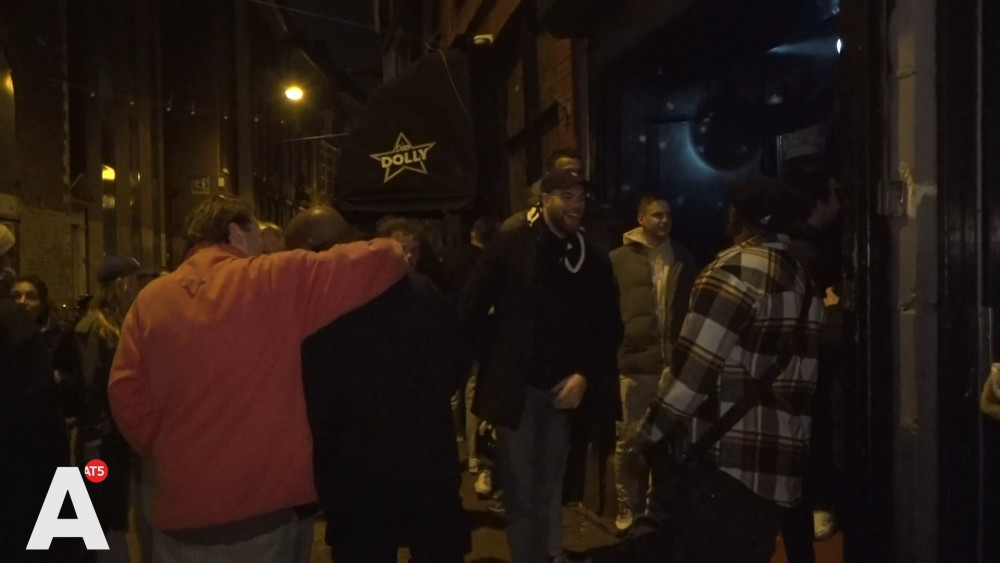The World Health Organization (WHO) has announced that Covax, the multilateral mechanism for equitable global access to covid-19 vaccines launched in 2020, will end on December 31.
Jointly led by the Coalition for Epidemic Preparedness Innovations (CEPI), the Vaccine Alliance (Gavi), UNICEF and the World Health Organization (WHO), Covax has so far supplied almost 2 billion doses of covid-19 vaccines and safe injection devices to 146 economies.
(Keep reading: WHO analyzes the risk of the new JN.1 variant of covid-19: is it dangerous?)
Their efforts are estimated to have helped prevent the deaths of at least 2.7 million people in the low- and lower-middle-income (low-income economies) participating economies in the Covax Advance Market Commitment (AMC) that received free doses through the mechanism, along with nearly $2 billion in critical aid to convert vaccines into vaccinations.
Related topics
These 92 low-income economies that were eligible to participate in the program with the support of the financing mechanism known as the Gavi Covax Advance Market Commitment (Covax AMC) will continue to have the option to receive doses of the covid-19 vaccine and support for administration through regular Gavi programs.
So far, 58 low-income economies have ordered a total of 83 million doses in 2024, with plans to focus on the continued protection of priority groups, including healthcare workers, community workers and older adults.
Unprecedented emergency response
Taking advantage of the lessons of the H1N1 flu pandemic, when most countries did not have vaccines, Covax partners defended from the early phases of the covid-19 emergency that “no one is safe until everyone is safe “, urging the world to put vaccine equity at the center of the global response and calling for all countries to have at least enough doses to protect those most at risk.
“We knew that market forces alone would not provide equitable access to vaccines and other tools,” recalled WHO Director-General Tedros Adhanom Ghebreyesus.
By the end of 2020, 190 economies of all income levels had signed agreements to participate in Covax, making it one of the most important multilateral partnerships of the 21st century. As of November 2020, it had raised $2 billion for vaccine procurement; and in January 2021, 39 days after the first vaccine administration in a high-income country, the first doses supplied by Covax were administered in a low-income country.
Covax was designed as a comprehensive coordination mechanism covering R&D and manufacturing, policy guidance, vaccine portfolio development, regulatory systems, supply allocation and country readiness assessments, transportation logistics, storage and vaccine management. vaccines, and monitoring countries’ coverage and absorption rates.
However, as an emergency solution launched in the middle of the pandemic, Covax faced many challenges. Without cash reserves up front, it was initially limited in its ability to sign early contracts with manufacturers, and while it was able to ship doses to 100 economies in the first six weeks of global rollout, export bans and other factors made it difficult. that large-volume deliveries would not be received until the third quarter of 2021.
Although Covax could not fully overcome the vaccine inequality that characterized the global response, it contributed significantly to alleviating the suffering caused by Covid-19 in the Global South.
Currently, the initiative has supplied 74 percent of all Covid-19 vaccine doses supplied to low-income countries (LICs) during the pandemic; and in total, 52 of the 92 AMC-eligible economies relied on Covax for more than half of their Covid-19 vaccine supply.
Those doses, provided free of charge and combined with nearly US$2 billion in distribution assistance, helped increase primary series coverage among the 92 AMC-eligible economies to 57 percent, compared with a global average of 67 percent.
(You may be interested in: United States: they monitor the spread of the covid variant during the end of the year holidays)
Two-dose coverage of health workers, the most critical to saving lives and keeping health systems running, stands at 84 percent in the lowest-income economies.
Covax also deployed 2.5 million doses to protect the most vulnerable in humanitarian and conflict contexts through a pioneering mechanism of its kind called the “humanitarian cushion”, designed jointly with international humanitarian organizations and established as a last resort to reach those who cannot easily access it through government programs.
The mechanism that saved millions of lives
“There are millions of people alive today who would not have been here without Covax. These avoided deaths mean that mothers can continue raising their children, and grandparents can enjoy watching future generations flourish,” said Jane Halton, president of the Council of CEPI Administration.
“Despite being built and funded from scratch in the midst of the deadliest pandemic the world has seen in more than a century, Covax’s achievements in saving lives were considerable. It should take its place in history and be proud of what he was able to achieve, but also serve as a reminder to all of us that we can and must do better next time,” he noted.
“Covid-19 has been the greatest health challenge of our time, and it was faced with innovation and collaboration on an equally unprecedented scale,” said José Manuel Barroso, president of the Board of Directors of Gavi, the Vaccine Alliance. “The impact of Covax has been historic, as has the knowledge it has generated about how, concretely, the world can do better next time.”
“The joint efforts of all partners to ensure an equitable response to the pandemic helped protect the future of millions of children in vulnerable communities,” said Catherine Russell, executive director of UNICEF. “This enormous and historic undertaking is something we can be collectively proud of and continue to build on,” she concluded.
2023-12-19 23:11:50
#Covid19 #announces #Covax #mechanism #equitable #access #vaccines


